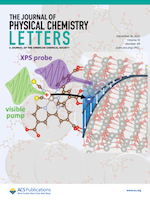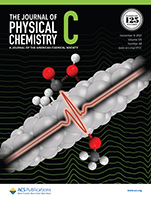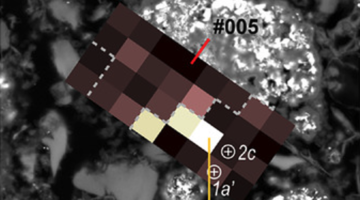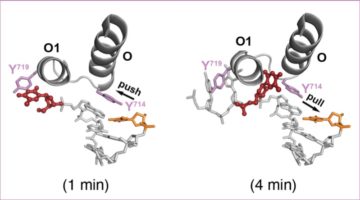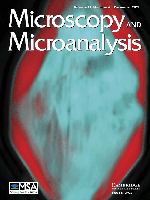Researchers developed a new technique that uses x-ray microtomography and silver staining to image every pigment cell of a whole zebrafish in 3D. The method could be used to learn more about the 3D architecture of melanoma tumors and potentially guide treatment decisions. Read more »
All News & Updates
New Device Advances Commercial Viability of Solar Fuels
A Berkeley Lab research team developed a new artificial photosynthesis device component that exhibits remarkable stability and longevity as it selectively converts sunlight and carbon dioxide into two promising sources of renewable fuels—ethylene and hydrogen. Read more »
Nanoscale Confinement of Photo-Injected Electrons at Hybrid Interfaces
Picosecond time-resolved x-ray photoemission spectroscopy provides real-time electron distributions of donors and acceptors in a prototypical bipyridyl-ZnO hybrid light harvesting system. The measurements show that photo-injected electrons remain localized within the defect-rich surface region of the nanoporous ZnO substrate, revealing a challenge for the extraction of free charge carriers. Read more »
Direct Observation of Surface-Bound Intermediates During Methanol Oxidation on Platinum Under Alkaline Conditions
A comprehensive mechanism for the methanol oxidation reaction (MOR) in alkaline media is presented, and it is shown that the MOR proceeds via two different pathways (via COad or H3C–Oad intermediates). The latter dominates the overall MOR current, suggesting that the H3C–Oad oxidation could be a viable pathway to accelerate the MOR in alkaline systems. Read more »
Unexpected Transformations Reinforce Roman Architectural Concrete
Researchers used the ALS to study binding phases in Roman architectural concrete, revealing reactions and profound transformations that contribute to long-term cohesion and durability. The findings add to our growing understanding of cementing processes in Roman concretes, informing resilient materials of the future. Read more »![]()
![]()
On-Site Access Procedures for Foreign Nationals
Foreign nationals who are planning to conduct experiments at the ALS should plan their visits at least two months in advance. The ALS website has the latest information on lead times and documentation required to process site access. Read more »
New UEC Members for 2022
Welcome to Connor Bischak, Sharon Bone, Wendy Gu, Yu He, and Quentin Williams. Thank you to Alex Fraño, Clemens Heske, and Antoine Wojdyla for your service.
Alyssa Brand, Chemical Safety Specialist
Alyssa Brand recently joined the ALS safety team. She’s not new to the Lab—she previously worked at the Molecular Foundry and in the EH&S Division. She is excited to join the ALS and learn more about all the science going on here. Read more »
DNA Synthesis: Flip It and Reverse It
What if the current model for DNA synthesis were flipped on its head? Using time-resolved x-ray crystallography, researchers gained new insights into this essential biological process, revealing that two steps in the synthesis pathway are, in reality, reversed. Read more »
Ptychography Reduces Spectral Distortions Intrinsic to Conventional Zone-Plate-Based X-Ray Spectromicroscopy
The point spread function (PSF) of a conventional zone-plate-based microscope limits the achievable spatial resolution and results in spatially resolved spectra that do not accurately reflect the spatial heterogeneity of the samples when the scale of the detail approaches the probe size. X-ray ptychography, a coherent-scattering-based imaging scheme that effectively removes the probe from the image data, returns accurate spectra from regions smaller than the probe size. Read more »
- « Previous Page
- 1
- …
- 43
- 44
- 45
- 46
- 47
- …
- 139
- Next Page »


